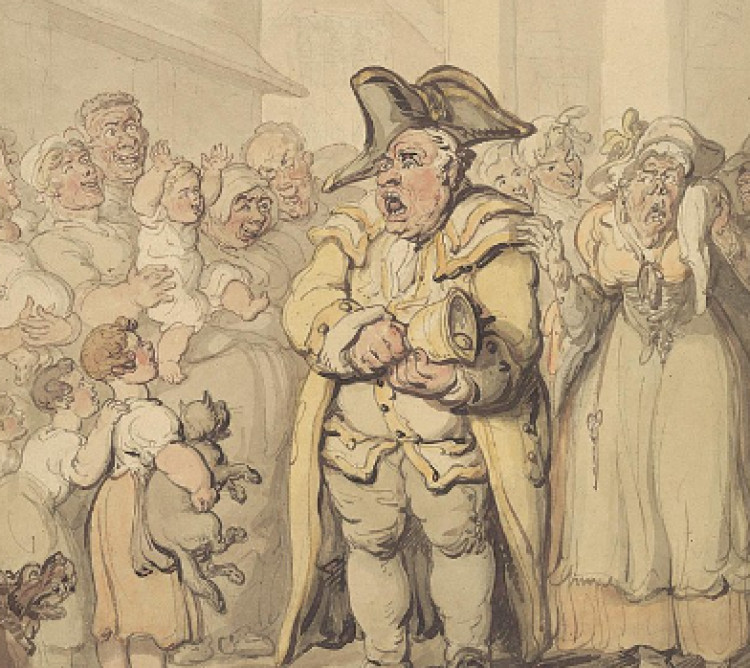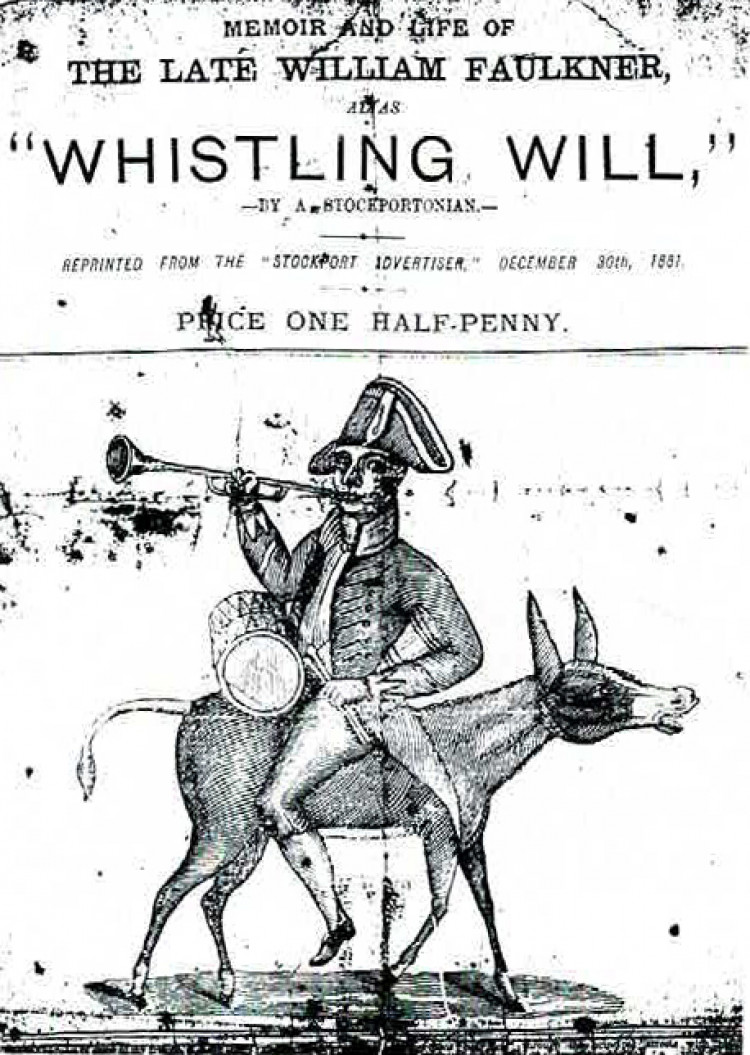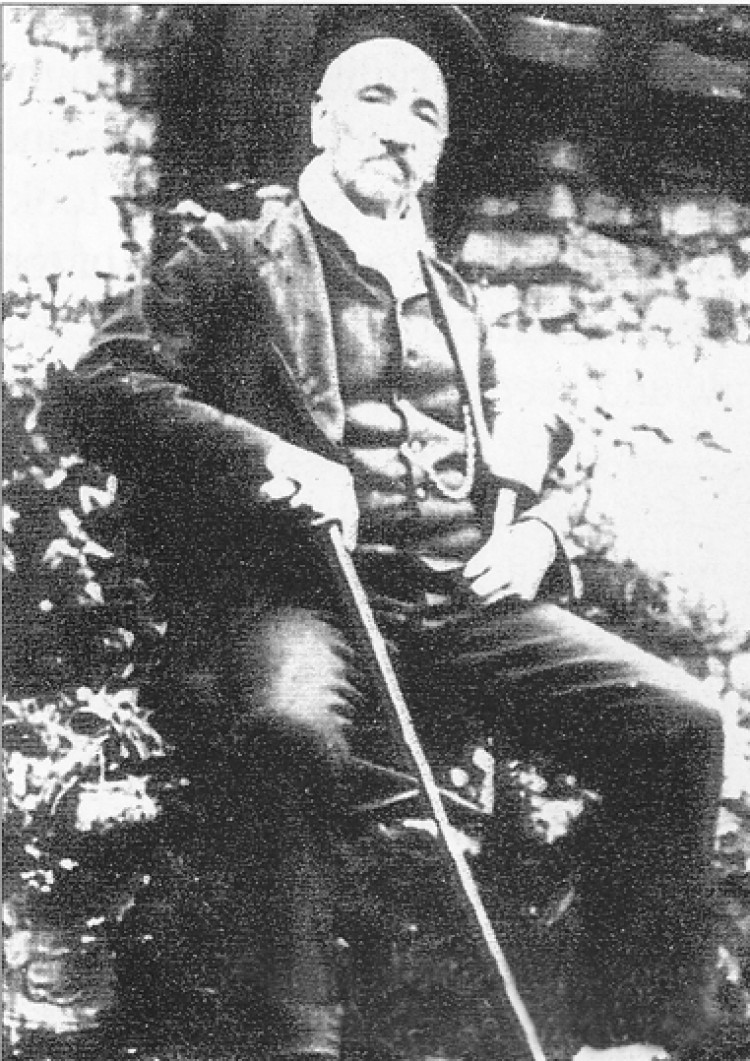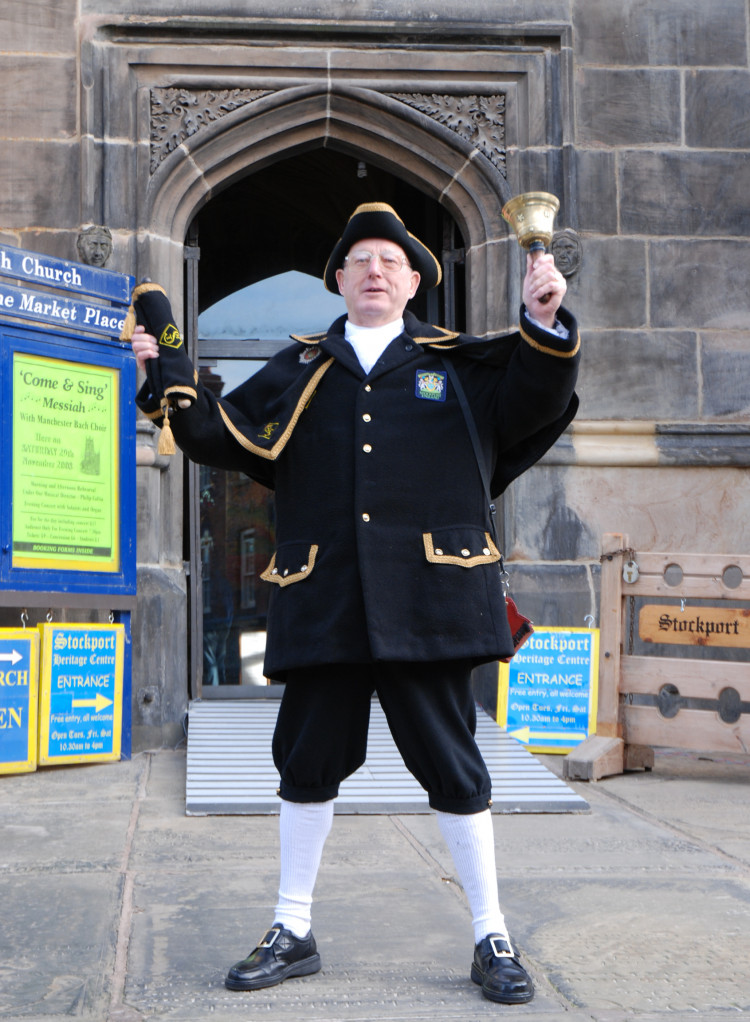A Bellow of Town Criers - a history of Stockport's town criers
By Nub News guest writer 5th Feb 2024
By Nub News guest writer 5th Feb 2024

By Maureen Fahey
Daily newspapers were not introduced until the late 17th century, and besides, they were costly and of limited value to the many unable to read. A Town Crier, or bellman, was therefore appointed to proclaim the news, make public announcements, recite local by-laws and advertise goods and sales.
Having read out the message, he would then attach it to the door post of the local inn, hence the term 'posting' a notice. On occasion, Town Criers would also pronounce marriage banns, lead funeral processions, escort the destitute to the workhouse, and even patrol the streets and make arrests.
Wrong-doers would often be arrested by the Bellman, who might then march them to the stocks for punishment, before posting details of their crimes for all to see. Public hangings were frequently attended by the Town Crier, who would make it known why the person was to be hanged, and sometimes cut down the body afterwards.
Some announcements, such as those concerning tax increases, were of course unpopular; Town Criers were therefore protected against being 'hindered or heckled', and to harm a bellman was considered an act of treason.

The first recorded Stockport bellman was Richard Benison, who died in the 1820s. His successor, James Goodwin, was a beefy, belligerent fellow who struck fear into the local children & was dismissed for misconduct.
A John Whitely followed, but did not hold the post for very long. One of the town's most notable bellmen, William Faulkner, a colourful and somewhat eccentric character, who lived on Cooper's Brow, then took up the post.
In the days before Peter Marsland's endeavours brought water into people's homes, William found work carrying it in cans on a yoke from the various streams, springs and pumps and delivering it to the townsfolk.
He whistled cheerfully as he went about his labours and when his deliveries were done, he accompanied his own tunes by drumming on his empty cans.
Known as 'Whistling Will', he became adept at playing the trumpet and performed at the theatre in Park Street, off the Market Place, before running a beer house in nearby Nelson Street.
When he later assumed office as Bellman, he caused a stir as, dressed in his red vest, braided coat, breeches and cocked hat, he rode facing backwards on a donkey, whistling, drumming, trumpeting and crying out the news.
He became such a nuisance that he was dismissed and took up a job as a newsagent. Mental illness then took hold and Will was imprisoned at Knutsford for grievously insulting a lady as she walked through the town. He was subsequently admitted to the Workhouse, where he ended his once-happy days.

James Cooper, an eating house keeper, bill-poster, ale taster, dog muzzler and Stockport's last Baronial Beadle followed.
His son George was born in 1824 and educated at the National School, which occupied the site of the Town Hall until 1902.
He became an activist and agitator, supporting the Plug Riots and Chartists and campaigning for the working class. In 1853, he organised – and settled – a protracted strike against industrial injustice. That same year, he travelled to Toronto, later moving to Philadelphia, where he became a bartender. He even fought for Abraham Lincoln during the American Civil War until discharge in 1865.
Returning to Stockport, he joined the family's bill-posting and town crying business, established by his father in 1830. A spell as the landlord of the Wheatsheaf Hotel followed, ending in 1882, after which George became an artists' model, posing as various characters at a Mr J. E. Partington's school of art. Sadly, this came to an end in 1890, when Mr Partington closed the school and left for America. George Cooper died in March 1895, aged 71, having married twice but left no children.

By this time, as communications and advertising had progressed considerably, town criers became redundant and the post remained unfilled.
However, the embers of this element of Stockport's history were fanned back into flame in 2007 by Jim Clare. Born in Manchester in 1935, Jim lived on Hall Street in Offerton and attended St Mary's parish school on Spring Gardens, leaving in 1950. In 1953, he and his best friend Eric Longson were called up for national service.
Over an eventful three years with the Cheshire Regiment, the two young men served in Egypt, Berlin and Cyprus, witnessing some unimaginable horrors, mindless cruelty and blatant injustices.
Leaving Eric to pursue a career as a regular soldier, Jim returned to civilian life & married his sweetheart, Margaret Burley, in 1957, the couple going on to have three children, Linda, Peter and David.
Jim joined Stockport Heritage Trust in 2000, becoming chairman in 2004 and reuniting with Eric, who visited the heritage centre with his wife, Sheila. In common with his predecessors, Jim was a colourful character.
An astute business man, he was a joker and raconteur, inspirational, enthusiastic and enterprising. In 2007, he became Town Crier and that Christmas, Trust members presented him with an engraved bell, and a costume bearing the Trust's logo and the Arms of Stockport.
Jim became a familiar figure at events in and around the Market Place, raising much-needed funds for the Trust and for St Mary's parish church.
This hugely popular man died in May 2014, leaving a void that will never be filled. The town of Stockport will never see his like again.

~
Those interested in learning more about Stockport's heritage can visit the heritage centre Tuesday 11am – 2pm and Saturday 10.30 – 2pm. The centre is situated inside St. Mary's Parish Church, Market Place, on the left hand side past the cafe.
The heritage trust also opens the former courthouse and dungeon to the public on the second Saturday of every month, from 10.30am until 3.30pm, or when the last visitor leaves.
The trust's website can be found HERE
~
Free from clickbait, pop-up ads and unwanted surveys, Stockport Nub News is a quality online newspaper for our town.
To get our top stories in your inbox each week, subscribe to our free weekly newsletter HERE.
Please consider following Stockport Nub News on Facebook or Twitter
CHECK OUT OUR Jobs Section HERE!
stockport vacancies updated hourly!
Click here to see more: stockport jobs
Share:























